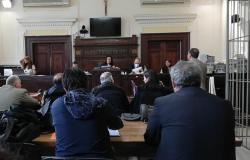Everything went as expected, even if up until the eve nothing was taken for granted, given the circumstances technical and bureaucratic difficulties and the presence of local opposition movements, but RFI in mid-June 2024 handed over to the builders, as they say in technical terms, the works on the southern construction site of the Trento freight railway ring road.
This is a formal step but it also represents the point of no return for the creation of a work that has undergone a troubled processabove all due to the possible environmental impact and the need to define the reclamation of some former industrial areas north of the Trentino capital heavily compromised by the presence of industrial and polluting waste.
Originally this work had been included among those planned and also financed with Pnrr funds, but given the completely unrealistic deadline of completing the construction sites by 2026, it was cancelled, but However, RFI guaranteed financial availability to start the works assigned in February 2023 to the Tridentum Consortium, a group of companies made up of Webuild (leader), Ghella, Collini Lavori and Seli Overseas. The project, after the latest updates, has a value of approximately 1.3 billion euros.
The ring road construction sites they therefore start from the entrance to the south of Trento where the first phase involves preparing the area and the access tunnels ready to accommodate the two mechanical cutters that will proceed with the excavation towards the north. The Chinese-built Tbms have already arrived in Italy, divided into various elements and will have to be reassembled and assembled directly on site.
The delivery of the work to the Tridentum Consortium is therefore one salient stage of the project although the start of the crucial phase of the works, when the cutters will start the engines, is expected no earlier than spring-summer 2025. In a second phase, excavation will also begin from the north with two other German-made cutters.
It has been decided the simultaneous use of four Tbms in order to reduce as much as possible the construction times of the ring road which is made up of a railway line that extends for 13 kilometers in the hill to the east, of which approximately 11 are in a double tube tunnel.
The new infrastructure will originate from the existing Verona-Brennero railway line, south of Trento in the Acquaviva area where work is now starting and it reconnects to the north at Roncafort, where the railway freight yard is located and not far from the Trentino interport. This work is one of the four variants deemed priority and therefore to be carried out in advance of the construction of the entire high-capacity railway line from Verona to the southern entrance of the Brenner base tunnel.
The first of these variants, the one from Ponte Gardena to Fortezza, essential to reduce the steepness of the historic line, was contracted out in June 2021 for an amount of 1.16 billion euros to a consortium which also in this case sees the Webuild group in the foreground.
The countdown has also begun for the completion of the excavation and cladding works on the rustico Brenner base tunnel on the Italian side where the two construction sites of Mules and the Isarco undercrossing operate: the finish line can now be seen because there is just over two kilometers of progress left in the mountain on a complex of over 44 kilometers of main tunnels.
Piermario Curti Sacchi
© TrasportoEuropa – All rights reserved – Stock photo
Reports, information, press releases, as well as corrections or clarifications on published articles should be sent to: [email protected]
Do you want to stay updated on the latest news on transport and logistics and not miss a single piece of news from TrasportoEuropa?
Sign up to our newsletter with the list and links of all the articles published in the days preceding sending. Free and NO SPAM!





